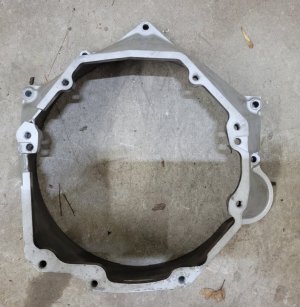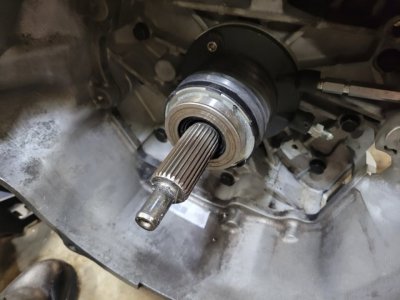Both dowels are in the transmission. It was missing one when I put it together a couple of years ago, but I have a spare dowel in the trans I use for a test stand for my speedometer conversions and I stole one out of that.
The way the release bearing is made it has a spring on it and is in contact with the pressure plate fingers all the time. I've never seen one like that, but that's how they designed it. Wish I could change that somehow. From what I can measure the bearing is compressed 1.100 inches.
The clutch push rod has play, so not pushing down the master cylinder piston. I'll adjust the position later and as you say that pedal position shouldn't have anything to do with the problem I'm having. I remember when I put the T56 in my Camaro I had a very high pedal engagement on the clutch also. I modified the push rod to be adjustable and ran it like that for over 40k miles. But, it doesn't have the hydraulic release bearing like this one does, has a clutch fork setup powered by hydraulics and the same exact master setup.
The disk can only go in one way. I've seen people put it in backward and forced the pressure plate on before and trashed stuff.
I've posted this on a Nova LSX forum and several say it's that I've not bled the system. I've tried to tell them how to bleed these setups many times but you can lead a hot rodder to beer, but can't make him guzzle it. Tried to explain the problem that it works for a little while, then can't get into gear, start it in gear to "break" what ever it is lose and it works perfectly for a little while. If it wasn't bleed completely it wouldn't work at all, not even for one time much less for a couple of 3 mile test drives.
But I understand people are trying to help and I really appreciate that. They don't know what experience I have and that I've been a machinist for 30 years and busting my knuckles on cars for 54 years.
One person suggested getting a completely new clutch setup and go from there. It's a $500 gamble and if it doesn't cure the problem I can't really take the part back. Again, that would turn me into a parts changer and not a mechanic. But, I may have no choice. I can't find anything wrong with what I have now.



